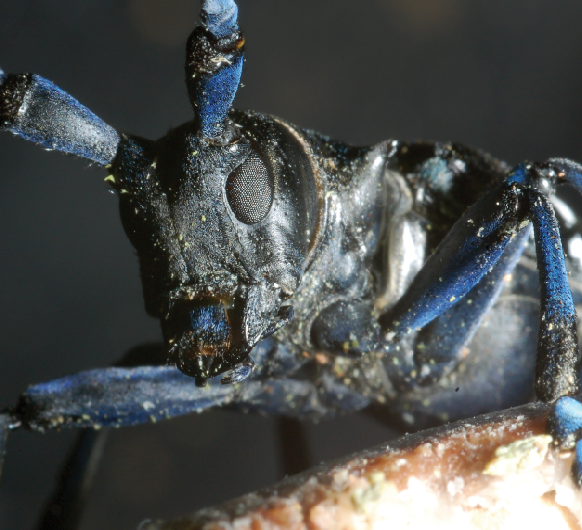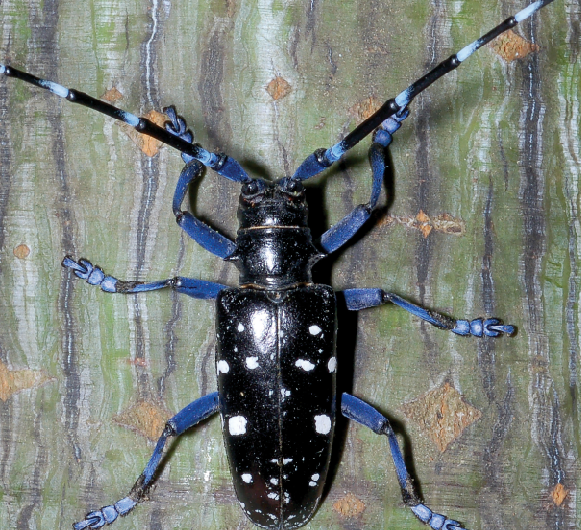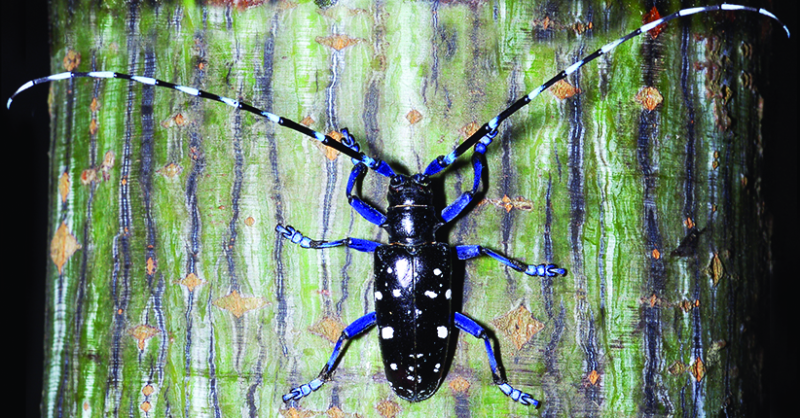Woodland destruction by beetles is facilitated by their unique genetics

The feeding habits responsible for the ecological success of the Asian long-horned beetle have been pinned down to their unique genes, according to new research published by the open access journal Genome Biology.
By comparing the genome of the Asian long-horned beetle with 14 other insects, the researchers were able to identify a suite of genes, some unique to this species, that aid the digestion of woody plant material and are likely responsible for the beetles ability to thrive in woodland regions all over the world. The Asian long-horned beetle is a globally invasive species capable of inflicting severe damage on many economically important trees. The potential economic impact in the United States, if uncontrolled, has been estimated at $889 billion.
Dr Duane McKenna, co-lead author from the University of Memphis, said: "Our detailed genomic analysis reveals that the Asian long-horned beetle has over 1,000 genes that aren't present in any other arthropod. We identified a total of 86 genes for enzymes called glycoside hydrolases - more than have been found in any other insect. These enzymes enable the beetle to digest woody plant material and detoxify plant chemicals and so indicate a genetic reason for their apparent success in feeding on trees worldwide".
Wood is a poor source of nutrients so any organism capable of surviving on a diet of woody plant material must have evolved unique characteristics that allow effective digestion and maximum extraction of energy.

Dr McKenna added: "The arsenal of glycoside hydrolase enzymes that the Asian long-horned beetle has allows it to degrade all of the main polysaccharides present in plant cell walls, releasing the sugars it needs for energy. Importantly, the range of enzymes this beetle has is highly diverse, which we believe allows it to breakdown many different molecules present across a wide range of woody plants."
The Asian long-horned beetle completes its entire development living and feeding within the wood of trees. In its earliest stage the larvae are specialized wood-borers, feeding on plant tissue under the bark. Later in its life cycle the larvae tunnel deeper into the wood where they continue to feed throughout their development. Adult beetles emerge from the tree and spend their relatively short life-span feeding on external parts of the tree.

Dr Stephen Richards, co-lead author from Baylor College of Medicine Human Genome Sequencing Center in Texas, United States, said: "In this case, when we fed beetle larvae on wood material from sugar maple trees we found that the activity of the glycoside hydrolase genes was increased, something not seen in larvae fed on an artificial diet. This experiment, along with our complementary analysis of the beetle genome, also revealed the specific set of genes, called CYP450 genes, which are involved in the detoxification of compounds encountered by the beetle when feeding on plant tissues."
The Asian long-horned beetle, also known as Anoplophora glabripennis, belongs to the longhorn beetle family, which contains over 35,000 different species, making it the most diverse group of wood-feeding animals on Earth.
According to the researchers this study has established a genomic basis for the invasiveness of the Asian long-horned beetle as well as the evolutionary success of beetles that feed on woody plants. Additionally, the identification of genes linked to key digestive and detoxification processes will ultimately provide novel tools for management of the Asian long-horned beetle and other invasive wood-boring pests.
Dr Richards added: "This publically available genome is part of a larger group as a pilot for the i5K initiative to sequence 1000's of insects. We hope that in the long term this foundation information about how any species works can be made available to anyone interested in biology, from researchers addressing specific questions to high-school students and hobbyist entomologists at home."
More information: Duane D. McKenna et al, Genome of the Asian longhorned beetle (Anoplophora glabripennis), a globally significant invasive species, reveals key functional and evolutionary innovations at the beetle–plant interface, Genome Biology (2016). DOI: 10.1186/s13059-016-1088-8
Journal information: Genome Biology
Provided by BioMed Central



















